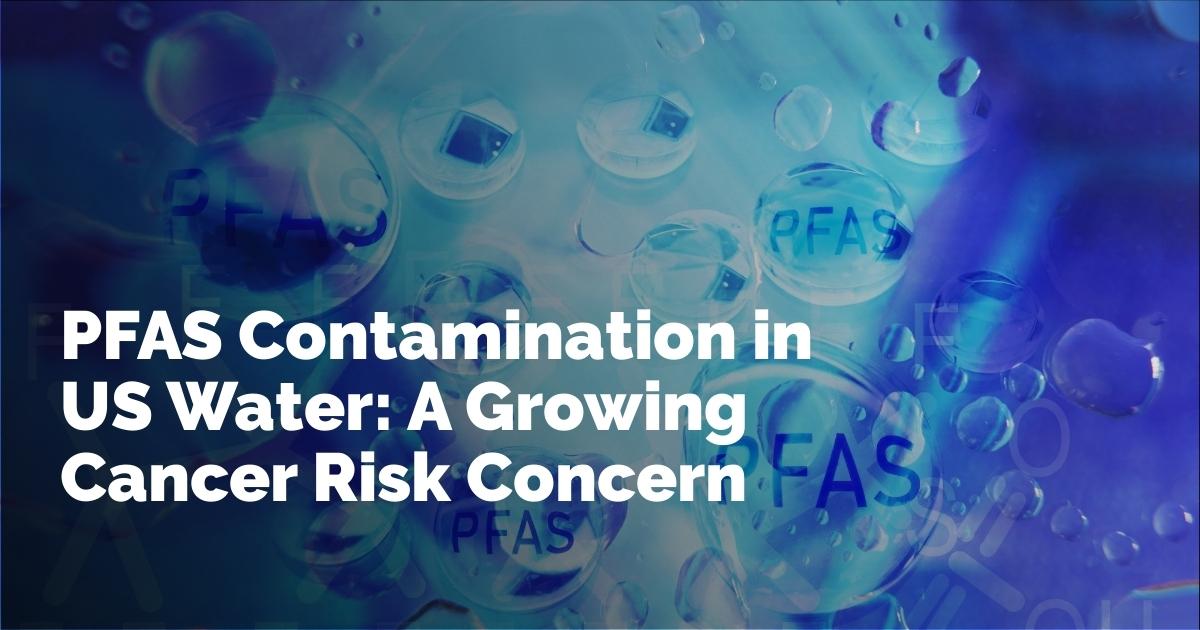PFAS in US Water and Its Link to Increased Cancer Risk
Understanding the link between environmental pollutants and cancer is crucial in developing effective public health policies. A recent study published in the Journal of Exposure Science & Environmental Epidemiology brings to light new evidence regarding per- and polyfluoroalkyl substances (PFAS) and their association with various cancers in the United States.
Background on PFAS Contamination
PFAS are synthetic chemicals that have been used in a variety of industrial and consumer products since the 1940s due to their resistance to grease, oil, water, and heat. However, these properties also mean PFAS persist in the environment and can accumulate over time. Notably, drinking water has been identified as a significant source of PFAS exposure for the general public.
In recent years, studies have detected PFAS in nearly half of the water systems across the United States, with higher concentrations typically found in urban areas and locations near PFAS-producing or utilizing industries. The potential health impacts of PFAS exposure have raised significant concerns, particularly their role in cancer development through mechanisms such as endocrine disruption, changes in genetic material, and oxidative stress. Despite growing evidence, the research scope remains somewhat limited, emphasizing the need for more comprehensive studies to guide public health interventions.
Details of the Study
This new study evaluates the effects of PFAS contamination on cancer incidence at the county level in the US from 2016 to 2021. Researchers utilized data from the National Cancer Institute’s SEER program, which covers approximately half of the US population and includes data from various registries in states like Connecticut, Iowa, California, and Texas. The study focused on age-adjusted cancer incidence rates across different counties, examining various cancer types as classified by the International Classification of Diseases for Oncology.
PFAS contamination data were sourced from two EPA monitoring programs: the UCMR3 and the UCMR5. These programs assess the presence of various PFAS compounds across public water systems in the US, providing crucial exposure data for analysis. In particular, UCMR5 expanded the number of PFAS monitored and lowered detection limits, potentially offering a clearer picture of PFAS contamination trends.
The researchers used statistical analyses to explore associations between PFAS exposure and cancer incidence while accounting for socioeconomic and environmental factors. They also calculated the number of cancer cases potentially attributable to PFAS exposure, employing methods that include population-attributable fractions and incidence rate ratios.
Results of the Study
The analysis covered 1,080 counties, representing approximately half of the US population, with PFAS data available for a significant portion of these counties. The study identified associations between PFAS and increased incidence of cancers in the digestive, endocrine, oral cavity/pharynx, and respiratory systems. Specifically, the analysis found that certain PFAS compounds were linked to particular cancer types. For example, perfluorobutanesulfonic acid was associated with a higher risk of oral cavity and pharynx cancers, while perfluorononanoic acid and perfluoroheptanoic acid were linked with thyroid cancers. Digestive system cancers, including colorectal and liver cancers, showed associations with PFBA and perfluorohexanesulfonic acid exposures.
Furthermore, respiratory cancers, notably lung cancer, were related to exposure to PFBA and perfluorooctanoic acid. Interestingly, the study also found that detection of certain PFAS sometimes correlated with reduced risks of skin cancers and leukemia, a finding that warrants further investigation to understand the underlying biological mechanisms.
Sex-specific differences were also a notable aspect of the study. Men were found to have higher risks of cancers like those of the urinary system, brain, and soft tissues, while women showed stronger associations with cancers of the thyroid, oral cavity, and soft tissues, suggesting potential interactions with sex-specific biological factors.
In terms of public health impact, the study estimates approximately 4,626 cancer cases annually can be attributed to PFAS exposure based on UCMR3 data, with this number rising to 6,864 cases under UCMR5 data.
Conclusions and Implications
The findings of this ecological study underscore the urgent need to address PFAS contamination in drinking water as a public health priority. Based on the associations found between PFAS exposure and increased cancer risks across multiple organ systems, targeted research efforts and effective policy measures are imperative. Recent regulatory efforts by the US Environmental Protection Agency aim to manage and reduce PFAS levels in drinking water, and this study provides additional motivation to bolster these initiatives.
Moving forward, continued research will be essential to fully elucidate the health impacts associated with PFAS and to develop comprehensive risk mitigation strategies. Public health interventions, combined with policy-driven efforts, will play a critical role in managing the potential cancer risks posed by PFAS exposure, ultimately safeguarding communities across the United States.
출처 : Original Source

